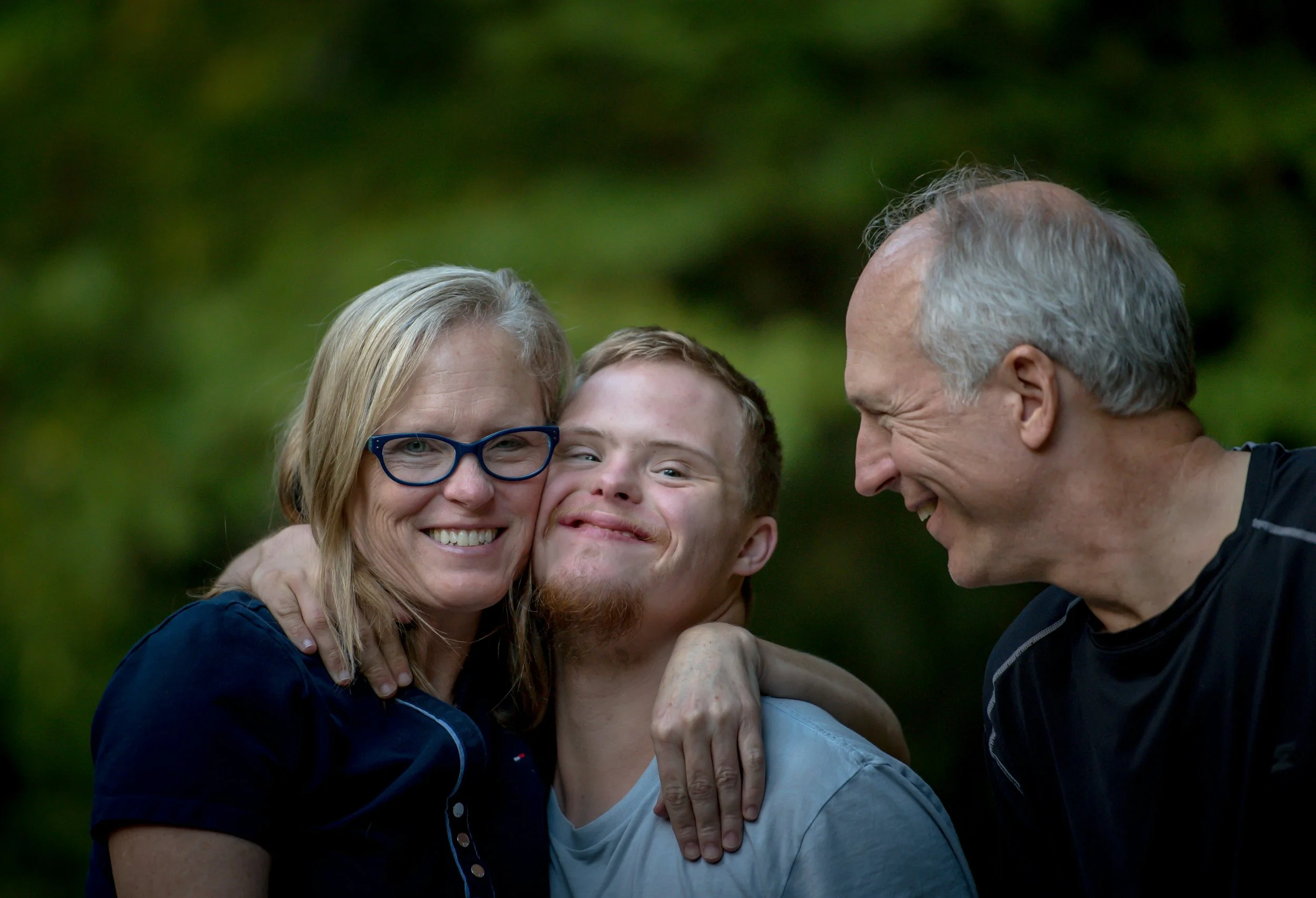Understanding Order
Definition
The motivational drive of Order focuses on how individual parts are arranged to create a functioning whole, ensuring that each part relates purposefully to the others. This arrangement forms a system—a type of governing framework—through which the parts interact, align, and collaborate to achieve shared goals.
Order sets the behavior of both the individual components and the system as a whole by establishing clear roles, relationships, and purposes. When each part contributes to the mutual benefit of others and the system itself, synergy is created, and harmony emerges.
This drive ensures that each component functions optimally, using its unique design to resource and sustain the system. Through these interconnections, the parts respond, relate, and support each other in achieving the overall goals of the system. Order transforms isolated elements into a unified entity, allowing for growth, efficiency, and balance in both relationships and operations.
The Nature of Order
Order is the arrangement of parts in a way that allows them to function cohesively as a system. It arises when components are organized in relation to one another with clear roles, relationships, and purposes. For something to have order, several factors are essential:
-
Every system needs a guiding principle or goal to give meaning to its parts. Purpose is the foundation of order, aligning elements into an effective whole.
Example: A clock achieves order because every gear, spring, and hand is positioned to fulfill the purpose of measuring time.
-
Order depends on how parts relate to one another. These relationships define how components interact and influence each other. Without connection, parts remain isolated and cannot contribute to the system.
Example: In an ecosystem, plants, animals, and microorganisms are interconnected, creating a natural balance where each part supports the others.
-
Underlying every system of order are rules or principles that govern the behavior of its parts. These principles ensure consistency and predictability, providing a foundation for stability.
Example: Mathematical systems rely on rules like symmetry and hierarchy to solve equations and understand patterns.
-
While roles and importance may not always be equal, balance ensures that all parts contribute effectively without overburdening or neglecting any component.
Example: In a family, each member plays different roles—parents provide guidance and support, while children contribute growth and vitality. Even if roles are unequal, balance sustains harmony.
How the Order Drive Functions
Focus on Structure and Systems
Order-driven individuals excel at simplifying complexity into clear, actionable frameworks. They naturally arrange elements into systems that work efficiently and predictably.Example: A project manager develops workflows to optimize productivity and reduce bottlenecks in team projects.
Stat: Organizations with clear workflows and structures are 44% more likely to achieve their goals (McKinsey, 2021).
Visionary Alignment
The Order drive combines attention to detail with a broad vision. Order-driven people balance long-term goals with daily operations, ensuring actions align with overarching purposes.Example: A city planner envisions sustainable urban growth while ensuring that immediate infrastructure needs are met.
Collaborative Synergy
Order-driven individuals align people and processes toward shared goals, fostering trust and cooperation. Their leadership creates clarity, enabling others to contribute meaningfully.Example: In healthcare, team-based care models improve outcomes by 35% compared to less coordinated approaches (NEJM, 2019).
Purpose and Harmony
Order prioritizes purposeful relationships between people, ideas, and resources, creating systems that are smooth and efficient. Conflicts are minimized, and goals are achieved collaboratively.Example: A supply chain manager ensures seamless coordination between vendors, manufacturers, and distributors, reducing delays and waste.
Stat: Efficient supply chains save companies an average of 15% annually (Gartner, 2022).
Order in the World
Building Societal Systems
The Order drive forms the foundation of institutions such as governments, legal systems, and organizations. These systems rely on alignment, collaboration, and harmony to maintain functionality.Example: The U.S. Constitution creates a framework for governance that balances powers between branches of government to sustain democracy.
Leadership and Vision
Order-driven leaders design structures that enable long-term success, often serving as "architects" of organizations.Example: Henry Ford’s assembly line revolutionized manufacturing, enabling efficient mass production and accessibility of automobiles.
Conflict Resolution
Order-driven individuals resolve disputes by aligning differing perspectives and restoring balance.Example: Workplace mediators reduce litigation costs by 75% and improve team morale (American Arbitration Association, 2020).
Cultural Practices
Traditions and rituals reflect Order by creating shared meaning and connection within communities, aligning individual actions with collective values.Example: Festivals like Thanksgiving foster unity and gratitude by aligning individual participation with a shared purpose.
Why Order Is Essential for Human Thriving
Stability and Predictability
Order reduces chaos by creating stable systems with clear roles and expectations, allowing individuals and societies to thrive.Impact: Families with clear routines report lower stress levels and higher life satisfaction (American Psychological Association, 2021).
Efficiency and Resource Optimization
Purposeful arrangements minimize waste and direct resources toward meaningful outcomes.Impact: In societies, efficient systems foster economic growth, improving quality of life through innovations like clean energy and digital infrastructure.
A Foundation for Innovation
Order provides the structure that supports creativity and exploration.Impact: Research institutions like CERN use meticulously ordered environments to achieve breakthroughs like the discovery of the Higgs boson particle.
Fostering Relationships and Cooperation
Order enables collaboration and trust by aligning individuals and groups toward shared goals.Impact: Communities with strong social organization report 20% higher civic engagement and volunteerism (Brookings Institution, 2020).
Creating Meaning and Purpose
By aligning parts within a system, Order gives individuals a sense of belonging and fulfillment.Impact: Employees who understand their role in an organization are 50% more engaged and productive (Gallup, 2022).
Conclusion
The Order drive is a foundational force that transforms complexity into cohesion, creating systems where individuals and components work together effectively. By fostering stability, efficiency, and harmony, it enables both personal fulfillment and societal growth.
Whether in a family, a workplace, or global governance, Order provides the clarity and alignment needed to achieve shared goals. By embracing the principles of Order, we can:
Build systems that foster sustainable progress.
Create environments where trust and collaboration flourish.
Align our efforts with broader purposes, ensuring that humanity’s actions are both meaningful and enduring.
Ultimately, the Order drive enables individuals and societies to thrive by connecting and harmonizing the parts with the whole, ensuring balance, functionality, and resilience.
Understanding Order
The Motivational Drive: Order
Definition
The motivational drive of Order focuses on how individual parts are arranged to create a functioning whole, ensuring that each part relates purposefully to the others. This arrangement forms a system—a type of governing framework—through which the parts interact, align, and collaborate to achieve shared goals.
Order sets the behavior of both the individual components and the system as a whole by establishing clear roles, relationships, and purposes. When each part contributes to the mutual benefit of others and the system itself, synergy is created, and harmony emerges.
This drive ensures that each component functions optimally, using its unique design to resource and sustain the system. Through these interconnections, the parts respond, relate, and support each other in achieving the overall goals of the system. Order transforms isolated elements into a unified entity, allowing for growth, efficiency, and balance in both relationships and operations.
The Nature of Order
Order is the arrangement of parts in a way that allows them to function cohesively as a system. It arises when components are organized in relation to one another with clear roles, relationships, and purposes. For something to have order, several factors are essential:
Purpose
Every system needs a guiding principle or goal to give meaning to its parts. Purpose is the foundation of order, aligning elements into an effective whole.
Example: A clock achieves order because every gear, spring, and hand is positioned to fulfill the purpose of measuring time.
Relationships
Order depends on how parts relate to one another. These relationships define how components interact and influence each other. Without connection, parts remain isolated and cannot contribute to the system.
Example: In an ecosystem, plants, animals, and microorganisms are interconnected, creating a natural balance where each part supports the others.
Rules or Principles
Underlying every system of order are rules or principles that govern the behavior of its parts. These principles ensure consistency and predictability, providing a foundation for stability.
Example: Mathematical systems rely on rules like symmetry and hierarchy to solve equations and understand patterns.
Balance
While roles and importance may not always be equal, balance ensures that all parts contribute effectively without overburdening or neglecting any component.
Example: In a family, each member plays different roles—parents provide guidance and support, while children contribute growth and vitality. Even if roles are unequal, balance sustains harmony.
How the Order Drive Functions
Focus on Structure and Systems
Order-driven individuals excel at identifying how elements fit together to form a cohesive system. Their natural inclination is to organize complexity into clear, actionable frameworks. For example, they may:Develop processes to optimize team productivity.
Establish protocols to ensure consistent results in an organization.
Visionary Alignment
The Order drive combines a broad vision with attention to detail. These individuals are skilled at balancing long-term goals with day-to-day operations, ensuring that efforts align with the overall purpose. They thrive on creating systems that are both practical and forward-thinking.Collaborative Synergy
Order-driven people are natural collaborators who work to align individuals toward common goals. They value teamwork and seek to foster environments where everyone understands their role and contributes meaningfully. Their leadership often inspires trust and cooperation, as their focus on clarity and alignment provides direction and stability.Focus on Purpose and Harmony
Those with an Order drive prioritize the relationships between parts, whether those parts are people, resources, or ideas. They work to ensure that interactions are smooth, systems are efficient, and conflicts are minimized. This focus on harmony helps create environments where everyone can thrive.
Order in the World
The Order drive is essential in shaping societal structures, organizations, and relationships. It manifests in various ways:
Building Societal Systems
The Order drive lays the foundation for social institutions such as governments, legal systems, and organizational hierarchies. These systems reflect the need for alignment, collaboration, and harmony, ensuring that societies function effectively.Leadership and Vision
In leadership roles, Order-driven individuals establish clear goals, align team efforts, and create systems to achieve long-term success. They often serve as the "architects" of organizations, designing structures that support efficiency, growth, and adaptability.Conflict Resolution
Order-driven individuals are adept at resolving conflicts by finding common ground and aligning differing perspectives. They seek to restore balance and create solutions that benefit the whole, often acting as mediators in challenging situations.Efficiency and Optimization
Whether in a workplace, community, or personal relationship, the Order drive focuses on streamlining operations, reducing waste, and ensuring that all efforts contribute to meaningful outcomes.
Order in Human Interactions
Creating Clarity in Relationships
Order-driven individuals bring structure to relationships by setting clear expectations, fostering open communication, and ensuring mutual understanding. They thrive on creating environments where trust and collaboration flourish.Encouraging Cooperation
By focusing on alignment and shared goals, Order-driven people naturally encourage teamwork and cooperation. They help others see how their contributions fit into the bigger picture, fostering a sense of purpose and unity.Balancing Diversity
The Order drive values different perspectives and works to integrate them into cohesive solutions. These individuals appreciate the strengths of others and strive to harmonize varying approaches to achieve common objectives.
The Purpose of the Order Drive in the Human Experience
The Order drive serves several key purposes for individuals, relationships, and society as a whole:
Creating Stability and Predictability
Order-driven individuals bring structure to chaotic or disorganized situations, providing stability and reassurance. This stability allows individuals and groups to operate with confidence, knowing there is a clear plan and direction.Fostering Collaboration and Unity
The Order drive encourages alignment and harmony, creating systems where diverse individuals can work together toward shared goals. This focus on cooperation helps build strong relationships and effective organizations.Advancing Growth and Innovation
By establishing clear frameworks, the Order drive creates a foundation for progress. Well-designed systems allow for innovation and improvement, ensuring that efforts are both sustainable and impactful.Ensuring Sustainability
The Order drive emphasizes efficiency and purpose, ensuring that resources—whether time, energy, or material—are used wisely. This focus on sustainability helps individuals and societies thrive over the long term.
The Essence of the Order Drive
At its core, the Order drive is about connection and alignment. It seeks to harmonize the parts with the whole, fostering clarity, purpose, and collaboration. Whether in personal relationships or large-scale organizations, those with an Order drive bring a sense of balance and structure that allows individuals and systems to flourish.
By understanding and embracing the Order drive, individuals can:
Create environments where clarity and purpose prevail.
Build systems that support sustainable growth and progress.
Foster relationships and communities grounded in trust, harmony, and shared goals.
The Order drive is a vital force for creating unity out of complexity, ensuring that humanity’s efforts are both meaningful and enduring.
How Order Functions in Life
Creating Systems for Functionality and Growth
Order is the mechanism through which chaos is transformed into organization, ensuring that every element in a system serves a purpose. Whether in a family, workplace, or society, Order establishes frameworks that allow each individual or component to contribute effectively.Example: In a family, each member plays a distinct role—caregiver, provider, or supporter—that aligns with the family’s overall goals of nurturing and stability.
Alignment and Collaboration
Order ensures that parts of a system are not only aligned but also complement one another. This alignment allows for collaboration, where individual efforts are amplified through teamwork. Each person, process, or resource works in harmony, reducing friction and maximizing efficiency.Example: In a company, Order-driven leadership creates clear hierarchies and workflows that enable employees to know their responsibilities, collaborate efficiently, and innovate within defined boundaries.
Setting the Stage for Synergy
The hallmark of Order is synergy—the idea that the whole is greater than the sum of its parts. When components are arranged purposefully, they enhance one another’s strengths and mitigate weaknesses, creating a system that achieves far more than isolated efforts.Example: In nature, ecosystems thrive when every organism plays its role—plants producing oxygen, animals balancing populations, and microorganisms decomposing organic matter—creating a self-sustaining balance.
Why Order Is Essential for Human Thriving
Stability and Predictability
Order provides the stability humans need to thrive. By creating systems with clear rules and roles, it eliminates uncertainty, allowing individuals to focus on growth and development rather than mere survival.Impact: Stability reduces stress, fosters trust, and encourages long-term planning, which is essential for personal and societal progress.
Efficiency and Resource Optimization
When parts are arranged purposefully, resources are used effectively, and waste is minimized. Order ensures that time, energy, and materials are directed toward meaningful outcomes, fostering productivity and sustainability.Impact: In societies, this efficiency allows for the development of technologies, infrastructure, and economies that improve quality of life for all.
A Framework for Innovation and Progress
While Order thrives on structure, it is also the foundation upon which innovation and creativity are built. By providing a clear framework, it gives individuals and systems the stability needed to take risks, experiment, and evolve without losing balance.Impact: For instance, scientific breakthroughs often occur within structured environments like research institutions, where Order ensures consistency while encouraging exploration.
Fostering Relationships and Cooperation
At its heart, Order is relational. It creates systems where individuals can connect, understand their roles, and work together for mutual benefit. This cooperation not only strengthens relationships but also builds trust and resilience in communities.Impact: Order-driven systems promote collaboration in diverse settings, from teams in workplaces to global partnerships addressing challenges like climate change or public health.
Creating Meaning and Purpose
Order aligns individuals and components with a larger purpose, giving them a sense of meaning and direction. It helps people see how their contributions fit into the bigger picture, fostering a sense of fulfillment and belonging.Impact: When individuals understand their role in a family, team, or society, they experience greater satisfaction and are more likely to engage wholeheartedly.
How Order Shapes Human Interactions and Societies
Governance and Leadership
The Order drive is integral to creating systems of governance that balance individual freedoms with collective responsibility. It helps establish laws, processes, and organizational structures that allow societies to function efficiently while ensuring fairness and harmony.Social Institutions
Social structures like education, healthcare, and justice systems are products of the Order drive. They align resources, people, and policies to address societal needs in a coordinated and sustainable manner.Example: The education system provides a structured path for learning, with curricula, roles (teachers, students, administrators), and policies that ensure consistency and progress.
Cultural Practices
Traditions, rituals, and cultural norms are also reflections of Order. They create shared meaning and connection within communities, helping people align their actions with values and goals that sustain collective identity.
The Unique Purpose of Order in the Human Experience
The purpose of the Order drive is to create harmony, efficiency, and sustainability, allowing individuals and groups to thrive. It serves humanity by:
Providing Direction: Order helps individuals and systems identify their purpose and work cohesively toward shared goals.
Enhancing Resilience: By fostering cooperation and balance, Order creates systems that are adaptive and capable of withstanding challenges.
Facilitating Fulfillment: Order enables individuals to see how their contributions matter, creating a sense of belonging and satisfaction.
Sustaining Progress: Through careful alignment and optimization, Order ensures that efforts lead to long-term success and meaningful growth.
The Nature of Order: How Does Anything Have Order?
Order is the arrangement of parts in a way that allows them to function cohesively as a system. It arises when components are organized in relation to one another with clear roles, relationships, and purposes. For something to have order, there must be:
Purpose:
At its foundation, order is established by purpose. Each part within a system must contribute toward a goal or purpose that gives meaning to its role and position. Purpose acts as the guiding principle that aligns elements into an effective whole.Example: A clock has order because every gear, spring, and hand is arranged to fulfill its purpose of measuring time.
Relationships:
Order depends on the relationships between parts. These relationships define how components interact and influence one another. Without these connections, parts remain isolated and cannot contribute to the system.Example: In an ecosystem, plants, animals, and microorganisms are interconnected, creating a natural balance where each part relies on and supports the others.
Rules or Principles:
Underlying every system of order are rules or principles that govern the behavior of its parts. These principles create predictability and stability, ensuring that the system operates consistently.Example: In mathematics, order is governed by principles like symmetry or hierarchy (e.g., equations follow specific steps to achieve solutions).
Balance:
For something to have order, there must be balance between its parts. No element can dominate to the detriment of others, and all must contribute in proportion to their role within the system.
What Establishes Order?
Order is established through a combination of natural processes, intentional design, and adaptive interactions:
Natural Laws:
In the physical world, order is often the product of natural laws that govern behavior. For example, the laws of gravity, thermodynamics, and motion create predictable patterns in the universe. These patterns allow systems like solar systems or ecosystems to exist in a state of order.Intelligence and Design:
Intentional order arises when an intelligence (human or otherwise) arranges parts to fulfill a specific purpose. This is evident in human-made systems like buildings, machines, or organizations.Example: A government is established with rules, roles, and processes to maintain social order.
Emergent Properties:
Sometimes, order arises spontaneously through interactions between parts without a central organizer. This is called emergent order. It occurs when simple rules at the local level create complex patterns at the global level.Example: Flocks of birds form intricate flight patterns without a leader, guided by simple rules like maintaining distance and alignment with nearby birds.
Feedback Loops:
Systems establish and maintain order through feedback mechanisms. Positive feedback amplifies productive interactions, while negative feedback corrects imbalances, ensuring the system stays aligned with its purpose.Time and Iteration:
Order often develops over time as components interact and adapt. Systems evolve, refine their functions, and solidify relationships to become more cohesive and purposeful.
What Establishes Function Within Order?
Function is the role or purpose that a part fulfills within a system. It is what each component contributes to maintain the system’s overall order and purpose. Function is established by:
Design and Intent:
Components are often given a function based on their design or intrinsic properties.Example: In a car, the engine is designed to convert fuel into motion, while the wheels transfer that motion to the road.
Context and Relationships:
A part’s function depends on how it interacts with other components within the system. Its purpose emerges from the relationships it has with other parts.Example: A single worker in a company contributes differently based on their role within the team or organization.
Alignment with Purpose:
Function is meaningful only when it aligns with the system’s overall purpose. Components that do not contribute to this purpose may disrupt the system’s order or be discarded.Adaptation:
Functions within a system may evolve over time as the system adapts to changes. This flexibility ensures that the system remains effective even as circumstances shift.
Why Is Order Important for Understanding and Thriving?
Order Provides Predictability
Order creates systems that are stable and predictable, allowing individuals and societies to navigate life with confidence. Predictability reduces chaos, enabling us to focus on growth and innovation rather than survival.Order Enables Functionality
Without order, components cannot work together effectively, and systems break down. Order ensures that everything has a purpose and contributes meaningfully to the whole.Example: A disorganized team struggles to achieve goals, while an ordered team with clear roles and communication thrives.
Order Facilitates Growth and Progress
Systems that are well-ordered provide a foundation for expansion and innovation. When the basics are structured, creativity and exploration can flourish.Order Promotes Harmony
By aligning parts to work together, order fosters harmony and synergy. This balance creates environments where individuals and systems can thrive without unnecessary conflict or waste.Order Reflects Purpose and Meaning
At its core, order is a reflection of purpose. It reminds us that things—whether in nature, society, or personal life—are interconnected and meaningful. Recognizing order helps us see our role in the larger system and inspires us to contribute.
Conclusion
Order is the foundation of all systems, whether physical, social, or conceptual. It arises from purpose, relationships, and principles, creating structures where each part functions cohesively within a larger whole. Understanding order helps us appreciate how things work together to achieve harmony and functionality, empowering us to create, sustain, and thrive in our environments.
Synergistic Motivational Design
your primary motivational drive is order.
The Order motivational drive is fundamentally about creating harmony, alignment, and seamless functionality within any environment, be it a personal, professional, or social setting. For individuals with a synergistic motivational design, Order is not merely about setting things in place; it’s about orchestrating various elements to work together harmoniously, enabling each part to contribute to a greater, cohesive whole. Here’s how the Order drive shapes and defines those with this synergistic approach:
1. Focus on Structured Environments
Individuals driven by Order naturally gravitate toward structure and organization, seeing these qualities as essential to productivity and peace. They prefer environments where tasks are well-defined, processes are clear, and roles are respected. This structure helps them visualize how each piece connects to form the larger picture, making the environment more than a series of tasks—it becomes a coordinated system that runs smoothly and predictably.
2. Inherent Drive for Collaboration and Team Harmony
Those with an Order-driven design place a high value on collaboration and cooperation. They understand that individuals, like components of a machine, perform best when their roles are aligned and supported by others. This makes them natural coordinators and facilitators, skilled in arranging people and resources to maximize efficiency and minimize friction. They often thrive in roles that allow them to bring people together, as they intuitively seek out ways to integrate diverse perspectives and strengths into a unified, well-functioning team.
3. Commitment to Precision and Predictability
People with a synergistic Order drive prioritize precision and predictability in their actions and expectations. For them, each detail matters, as each plays a role in maintaining the integrity of the entire system. They value reliable routines and well-established protocols because these create a predictable foundation from which they can build. This predictable framework is essential for them to achieve their larger vision of harmony and efficiency, as it minimizes disruptions and fosters a sense of security for everyone involved.
4. Creation of Systems that Foster Synergy
An Order-driven person isn’t satisfied with simple organization; they aim to design systems that go beyond basic functionality. Synergy is achieved when these systems allow individual components to enhance each other’s performance, creating outcomes greater than the sum of their parts. This person’s skill lies in recognizing how to arrange resources, information, and efforts in ways that boost the overall effectiveness of the group or project, creating a dynamic where everything and everyone works better together.
5. Sense of Fulfillment in Harmony and Cohesion
True fulfillment for someone with a synergistic Order design comes when everything flows in a state of harmony. They experience a deep satisfaction from seeing all parts of a project, team, or system working smoothly and effectively together. This harmony is not only practical; it’s also deeply meaningful to them, as it reflects their core motivation. To them, success is not just about outcomes but also about the quality of the process itself. They find peace and contentment when every element is in sync, serving a purpose, and contributing to a well-orchestrated whole.
6. Long-Term Vision and Sustainable Growth
Because Order-driven individuals think in terms of system-wide functionality, they are often strategic in their approach to long-term success. They consider how today’s decisions impact future stability, growth, and coherence. Sustainability is key for them—they want systems that will not only work well now but will continue to provide value and efficiency over time. This forward-thinking approach makes them reliable stewards of long-term goals, ensuring that projects and systems remain robust and functional as they grow and evolve.
7. Balance Between Independence and Interdependence
Individuals with a synergistic Order drive understand the delicate balance between independence and interdependence. While they value each component’s unique contribution, they believe true success comes when these parts can work in tandem, supporting and enhancing each other’s efforts. They are skilled at designing systems that respect individuality while promoting interdependent collaboration, recognizing that the best results are achieved when everyone’s strengths are integrated into a cohesive, supportive structure.
In summary, those with an Order-based synergistic design are motivated by the vision of an organized, harmonious system where each part is valued, supported, and aligned with a greater purpose. They thrive in environments where they can bring structure to complexity, foster collaboration, and ensure everything runs in a smooth, sustainable, and balanced way. This drive shapes them as natural architects of synergy, where their contributions consistently aim to create an enduring sense of harmony and cohesion.
Order is one of the seven motivational drives. It focuses on how things are arranged and how each part relates to the whole. This arrangement creates a system where each part functions in harmony with the others, forming a cohesive and efficient structure. The system acts like a governing body, directing the work and relationships of its parts. The purpose of this order determines the behavior of both the individual parts and the system as a whole. When each part works for the mutual benefit of the others and the system, synergy, and harmony are achieved. This synergy allows each part to contribute its unique usefulness back to the system, creating a cycle of functionality and resourcefulness.
The motivation drive of Order is centered on the desire to create structure, harmony, and purposeful systems in all aspects of life. Those driven by Order see the world through the lens of organization and alignment, focusing on how things relate to one another within a larger framework. This drive inspires them to build systems where each part has a specific role, contributing to a smooth, efficient, and interconnected whole.
Individuals motivated by Order are natural planners, detail-oriented thinkers, and visionaries of structure. They often feel a deep need for clarity and function in their surroundings, seeing the potential for synergy where others might see only parts. This drive enables them to bring a sense of stability and predictability to their work and relationships, helping others understand their roles and how they fit into the larger picture.
In essence, the motivation drive of Order brings coherence and purpose to chaotic or disorganized environments, transforming them into balanced, functional systems. Whether in personal life, work, or larger group dynamics, Order-driven individuals thrive when they can create patterns, set priorities, and guide others toward goals that honor both individual contributions and the success of the collective whole.
For individuals driven by Order, the process of determining "what order should be" relies on several key means:
Observing Relationships and Patterns: Order-driven individuals naturally look for connections and relationships within any system. By analyzing how elements interact, they identify patterns that reveal underlying structures, helping them shape an arrangement that enhances functionality and coherence.
Clarifying Purpose and Goals: Understanding the overall purpose or end goal is essential. Order-driven people clarify objectives to ensure that each part of the system supports the bigger picture. This clarity of purpose guides their decisions on how to structure roles, tasks, and resources effectively.
Evaluating Efficiency and Flow: Efficiency is a core component of Order. Those with this drive assess workflows, looking for ways to improve processes, eliminate redundancies, and increase synergy. This leads them to establish order in ways that facilitate seamless transitions and efficient resource use.
Seeking Input from Others: While they have a clear vision of structure, Order-driven individuals value insights from others to refine their understanding. Listening to the needs and strengths of the people involved allows them to create arrangements that are both functional and supportive.
Balancing Flexibility with Stability: Effective Order requires a balance between fixed structures and adaptable elements. Those with this drive recognize the importance of stability but also build in flexibility to accommodate growth, change, and unforeseen challenges.
Applying Standards and Best Practices: Standards and proven methods provide a foundation for Order-driven individuals to establish guidelines that align with best practices. This creates consistency, enabling them to arrange systems that others can rely on and follow easily.
Testing and Iteration: Order-driven individuals often refine and adjust their systems based on real-world results. By monitoring effectiveness, they can make adjustments that ensure the system remains relevant and continues to support the overarching goals.
These means enable Order-driven people to construct systems that aren’t only organized but also deeply aligned with purpose, functionality, and the collective needs of those involved.
12 Elements of your motivational drive
Motivational drives are profoundly shaped by the fulfillment of core psychological needs, and these needs are nurtured by specific conditions that foster intrinsic motivation. Each of the 12 key areas—autonomy, competency, relatedness, purpose, curiosity, enjoyment, challenge, self-determination, internal rewards, growth mindset, novelty, and feedback—interacts with motivational drives in a unique way. By satisfying these needs, they act as catalysts for energizing motivation. Here's an insightful breakdown of how each area connects to our intrinsic drives, fueling our actions and goals.
-
Concept: Your sense of order is enhanced when you have control over organizing your environment and processes. The freedom to structure your own systems and methods increases your intrinsic motivation.
Application: Develop your own organizational strategies and systems, giving yourself the autonomy to decide how to arrange and manage your tasks. This control will boost your motivation and help you create a more efficient and personalized workflow.
-
Concept: Your innate desire to learn and explore new methods of organization drives your motivation for order. Curiosity keeps you engaged and motivated to find innovative solutions.
Application: Promote a culture of continuous improvement by actively learning about new organizational techniques and tools. This approach will keep your curiosity alive and help you discover more effective ways to maintain order.
-
Concept: Personal satisfaction and fulfillment from achieving order and maintaining well-functioning systems are powerful motivators. Internal rewards like a sense of harmony, efficiency, and accomplishment drive your intrinsic motivation.
Application: Reflect on your personal achievements, recognize the value of your organizational efforts, and acknowledge the order and efficiency you’ve created. This reflection will reinforce your motivation and encourage continued success in maintaining order.
-
Concept: Feeling effective and capable in creating and maintaining order boosts your intrinsic motivation. Mastery of organizational skills and seeing the tangible results of your efforts enhance your sense of competence.
Application: Engage in opportunities for skill development in organization, project management, and system design. This will help you refine your abilities and increase your motivation as you see the positive impact of your efforts.
-
Concept: Genuine pleasure and satisfaction from creating and maintaining order are central to your drive. Enjoyment fuels your desire to continue organizing and improving systems.
Application: Create an environment where the process of organizing is both enjoyable and rewarding. Celebrate successful organization and system implementation to reinforce your motivation and keep the process fulfilling.
-
Concept: Belief in your ability to grow and improve your organizational skills through effort and learning aligns with a growth mindset. This belief encourages persistence and resilience when facing organizational challenges.
Application: Foster an environment that views organizational challenges as opportunities for growth and learning. Embrace these challenges as chances to develop resilience and adaptability, which will strengthen your organizational skills over time.
-
Concept: Positive relationships and a sense of community with others who value order and organization boost your motivation. Collaborating with others to achieve a well-ordered environment fosters a sense of belonging.
Application: Encourage teamwork in organizing projects, creating systems, and maintaining order within a group or organization. Working together with others who share your values will strengthen your sense of belonging and motivation.
-
Concept: Tackling difficult but attainable organizational tasks gives you a sense of achievement. Challenges that stretch your abilities without being overwhelming enhance your motivation.
Application: Set challenging yet achievable organizational goals and tasks that push you to refine your systems and processes. This approach will help you grow and stay motivated to improve and maintain order.
-
Concept: Exposure to new and varied organizational tools, techniques, and systems keeps the process of creating order fresh and engaging. Novelty prevents boredom and sustains your interest.
Application: Regularly introduce new organizational methodologies, tools, and systems to keep your journey of achieving order dynamic and exciting. This variety will help maintain your motivation and enthusiasm for organizing.
-
Concept: Seeing your organizational efforts as meaningful and contributing to a greater cause increases your motivation. Aligning your organizational tasks with personal and collective goals gives you a strong sense of purpose.
Application: Emphasize the impact of your organizational skills on achieving overall goals and improving the efficiency of your team or organization. Recognizing this contribution will deepen your sense of purpose and drive to maintain order.
-
Concept: Your perception of being in control of your organizational decisions is essential. Feeling autonomous in your organizing efforts strengthens your motivation.
Application: Encourage yourself to take on self-initiated organization projects and give yourself the freedom to design and implement systems as you see fit. This autonomy will enhance your motivation and satisfaction in creating order.
-
Concept: Constructive feedback on your organizational efforts helps you understand your progress and identify areas for improvement. Positive feedback enhances your feelings of competence and motivation.
Application: Seek regular, constructive feedback on your organizational projects, celebrate milestones, and use tracking tools to visualize your progress in maintaining order. This approach will boost your confidence and motivation to keep refining your organizational skills.
understanding pace + flow
Pace and flow play important roles in how we engage with our motivational drives.
Pace relates to the speed at which we prefer to approach tasks and goals. People with different motivational drives may naturally gravitate towards faster or slower paces. For example, those driven by Progress might thrive with a quicker pace, seeking to achieve goals swiftly, while those driven by Discovery may prefer a more deliberate pace, allowing time for exploration and deep understanding.
Flow refers to a state of being fully absorbed in an activity where challenges align with your skill level, creating a sense of effortless engagement. Achieving flow can be highly motivating, especially when it aligns with a person’s intrinsic drive. For instance, someone with a Fulfillment drive may experience flow when engaging in joyful or creative activities, while someone with a Resource drive may find flow in efficiently managing assets or organizing resources.
Both pace and flow help tailor how we interact with our motivations, keeping us engaged and energized by aligning tasks with our natural preferences and strengths.
the Pace and Flow of the order Drive
Overall Pace:
The overall pace of someone driven by Order is deliberate and controlled, prioritizing consistency, predictability, and precision. They move at a pace that allows for careful planning and execution, ensuring that everything is in its place and functioning as intended.
Flow:
The flow for those driven by Order is systematic and structured, with a strong focus on organization and efficiency. They are most in their element when they can implement and manage systems that bring clarity and order to complex situations. Their flow involves a continuous process of organizing, refining, and optimizing, ensuring that everything runs smoothly and harmoniously.
Pace Increase and Activation:
Pace Increase: The pace of an Order-driven individual increases when they are engaged in tasks that involve establishing or refining systems, optimizing processes, or bringing order to disorganized situations. The clarity of purpose and the satisfaction of creating efficiency can lead to a more rapid and focused pace.
Activation: Key activators include opportunities to organize and streamline operations, environments that value precision and clarity, and projects that require meticulous planning and execution. The presence of clear goals, well-defined roles, and the challenge of bringing harmony and efficiency to complex tasks can significantly enhance their flow and increase their pace.
For individuals driven by Order, their pace and flow are characterized by structure, consistency, and a focus on organization and harmony. Specific elements can activate their flow and increase their pace, aligning with their natural drive to create and maintain order. Here’s how this unfolds:
-
Pace: Individuals with an Order drive often move at a deliberate and organized pace. They take the time to ensure that everything is properly structured and in its rightful place before proceeding. Their pace is steady, reflecting a desire to create order out of chaos and ensure that every element fits within a well-defined system.
Flow: Their flow is highly structured, with a clear sequence of steps that are meticulously planned and executed. They thrive in environments where they can establish routines, create systems, and organize processes.
Pace Increase: Their pace can increase when they are in the process of setting up or refining systems that enhance efficiency or organization. The excitement of bringing order to a chaotic situation can spur them to move more quickly as they work to establish structure.
Activation: Being given the responsibility to organize, systematize, or streamline operations can activate their flow. Clear goals, well-defined roles, and environments that value precision and clarity also enhance their pace and engagement.
-
Pace: The pace of those driven by Order is methodical, focusing on maintaining and enhancing structure. They prefer a measured approach that allows them to assess and refine systems continuously, ensuring that all components function cohesively within the larger framework.
Flow: Their flow revolves around creating and maintaining a coherent structure, excelling in situations that require coordination, planning, and the integration of various elements. Their flow is systematic, ensuring that all parts work together harmoniously.
Pace Increase: When they have a clear plan or strategy in place, their pace increases as they work to implement it efficiently. Deadlines or time-sensitive projects that require quick and precise execution can also spur them into faster action.
Activation: Structured environments with clear expectations, timelines, and objectives are key activators. Projects that require detailed planning, coordination, and the successful integration of complex components also enhance their pace and focus.
-
Pace: Progress for those driven by Order is marked by a smooth, consistent pace that seeks to balance efficiency with harmony. They aim to optimize processes so that they run seamlessly, without unnecessary interruptions or conflicts.
Flow: Their flow is continuous and harmonious, with an emphasis on creating environments where everything works together efficiently. They excel at optimizing systems and processes, ensuring that operations are as smooth and efficient as possible.
Pace Increase: Their pace accelerates when they are fine-tuning systems or resolving inefficiencies. The satisfaction of achieving a state of harmony and operational efficiency motivates them to work quickly and effectively.
Activation: Opportunities to improve processes, resolve conflicts, or streamline operations are strong activators. Environments that require maintaining high standards of order, efficiency, and collaboration also activate their flow and can lead to an increase in pace.
For individuals driven by Order, certain factors can activate their flow and increase their pace, aligning with their natural inclination toward organization, structure, and creating harmony within systems. Here are some key triggers:
-
Activation: Situations where they can design, implement, or refine systems and processes strongly activate Order-driven individuals. They are motivated by the chance to bring organization and efficiency to chaotic or underperforming areas.
Pace Increase: When they see a clear opportunity to create order out of disorder, their pace increases as they work energetically to establish or enhance systems that ensure smooth operation.
-
Activation: Complex situations that lack clear structure or where multiple elements need to be coordinated activate their drive. They are motivated by the challenge of bringing clarity and order to intricate or disorganized scenarios.
Pace Increase: The urgency to impose structure on a complicated situation can lead to a faster pace as they work to organize, systematize, and ensure all components function harmoniously.
-
Activation: When there are significant stakes involved in ensuring that systems or processes run smoothly—such as during large projects or critical operations—Order-driven individuals are highly engaged. The pressure to maintain order under these conditions heightens their sense of responsibility.
Pace Increase: The importance of preventing disorder or inefficiency in high-stakes situations can significantly increase their pace as they focus on maintaining or restoring order quickly.
-
Activation: Situations where they can bring teams together, align their efforts, and ensure everyone is working cohesively towards a common goal strongly engage Order-driven individuals. They thrive on creating synergy and ensuring that collaboration is well-coordinated.
Pace Increase: The need to align and coordinate multiple elements or people in a project can drive them to work more rapidly, especially if time-sensitive coordination is crucial to success.
-
Activation: The opportunity to develop and implement long-term plans or strategies that improve organizational efficiency and effectiveness activates their strategic thinking. They are motivated by the chance to create lasting order and stability.
Pace Increase: Their pace increases when they are working on long-term plans that require timely implementation, particularly when the success of these plans depends on precise and efficient execution.
-
Activation: When conflicts arise or disruptions threaten the smooth functioning of systems, Order-driven individuals are highly activated. They are motivated by the need to restore harmony and ensure that everything is operating as it should.
Pace Increase: The urgency to resolve conflicts or address disruptions quickly can lead to an accelerated pace as they work to restore order and prevent further complications.
-
Activation: Being recognized for their ability to organize, systematize, and maintain efficiency activates their drive. Knowing that their efforts are valued encourages them to continue refining and perfecting systems.
Pace Increase: Positive feedback and acknowledgment of their organizational abilities can prompt them to work even more efficiently, increasing their pace as they strive to maintain high standards of order and efficiency.
-
Activation: Opportunities to streamline operations, reduce inefficiencies, and optimize processes strongly engage Order-driven individuals. They are motivated by the potential to make systems more effective and less prone to errors or delays.
Pace Increase: The prospect of making significant improvements to how things are done can lead to a quicker pace as they eagerly work to implement changes that bring greater order and efficiency.
Order In the workplace
In the workplace, order is essential for achieving efficiency and productivity. For instance, consider a well-organized project team. Each team member has a specific role and set of responsibilities that complement the roles of others. This structured approach ensures that tasks are completed efficiently and that resources are used effectively. For example, in a marketing team, the content creator, graphic designer, and social media manager all work together in a coordinated manner, guided by a project manager. Their orderly collaboration leads to the successful execution of marketing campaigns, where each part of the team’s work enhances the overall outcome.
In personal life
In personal life, maintaining order can lead to a more organized and less stressful environment. This might involve setting up systems for managing daily routines, such as meal planning, household chores, and budgeting. For example, a family might use a shared calendar to keep track of everyone's schedules, ensuring that activities are coordinated and conflicts are minimized. This orderly approach allows family members to function more harmoniously, reducing stress and improving the overall quality of life. By organizing their time and resources, individuals can create a balanced lifestyle that supports their personal and collective goals.
in relationships
In relationships, order helps to create stability and mutual understanding. By establishing clear communication and expectations, partners can navigate their interactions more smoothly. For instance, a couple might set aside regular time to discuss their goals, concerns, and plans. This practice helps to ensure that both partners are on the same page and can work together effectively toward their shared objectives. Additionally, having a structured approach to resolving conflicts and making decisions can strengthen the relationship by fostering trust and cooperation.
Summary
Ultimately, the motivational component of order is about more than just organization; it’s about creating a system where each part functions in harmony with the others. Whether in work, personal life, or relationships, maintaining order involves arranging things in a way that supports the overall purpose and goals of the system. By doing so, we create environments that are efficient, productive, and harmonious, allowing each part to contribute its best to the whole. This interconnectedness and synergy enable us to achieve our goals more effectively and enjoy a more balanced and fulfilling life.
Areas where order operates
-
Project Management and Workflow Optimization:
Example: A tech company implements Agile project management practices to ensure that tasks are completed in a systematic and efficient manner, promoting teamwork and clear communication.
Example: A manufacturing firm uses Lean principles to streamline production processes, reducing waste and improving productivity.
Motivational Drive of Order: In these environments, the drive of order operates by creating structured systems that enhance efficiency and clarity. Project management practices and workflow optimization ensure that operations run smoothly, minimizing chaos and maximizing productivity.
-
Curriculum Development and Academic Scheduling:
Example: A university designs a well-organized curriculum with clearly defined course sequences and prerequisites to ensure that students progress smoothly through their programs.
Example: A college implements a comprehensive academic scheduling system that avoids conflicts and maximizes resource utilization, ensuring that classrooms and labs are used efficiently.
Motivational Drive of Order: The drive of order in these settings ensures that educational programs are well-structured and resources are optimally utilized. This systematic approach helps students and faculty navigate their academic responsibilities with ease and clarity.
-
Community Building Initiatives:
Example: A city council organizes an annual community festival with music, food, and activities for all ages, promoting a sense of belonging among residents.
Example: A local government launches a public health campaign that includes free fitness classes in parks and wellness workshops to improve community health.
Motivational Drive of Fulfillment: Community-building initiatives foster a sense of unity and belonging among residents. By organizing events and health programs, local governments create opportunities for individuals to connect, engage in healthy activities, and experience joy in their community. These efforts contribute to a supportive and fulfilling community environment.
Policy Making and Public Service:
Example: A city council holds regular town hall meetings where residents can voice their concerns and suggestions, ensuring policies reflect the community's needs.
Example: A government agency implements a mentorship program for small business owners, connecting them with experienced entrepreneurs to support local economic growth.
Motivational Drive of Fulfillment: By involving residents in policy-making and providing support for local businesses, government entities foster a sense of inclusion and empowerment. These practices ensure that community members feel heard and valued, enhancing their overall satisfaction and fulfillment. Mentorship programs also support personal and professional growth, contributing to a thriving local economy.
-
Program Implementation and Monitoring:
Example: A non-profit organization develops a detailed implementation plan for its community outreach programs, ensuring that resources are allocated effectively and progress is tracked.
Example: A charity sets up a monitoring and evaluation framework to assess the impact of its initiatives, making data-driven adjustments to enhance program effectiveness.
Motivational Drive of Order: The drive of order in non-profits ensures that programs are implemented methodically and their impacts are systematically measured. This organized approach maximizes the effectiveness and sustainability of their efforts.
-
Patient Care Coordination and Clinical Protocols:
Example: A hospital implements an electronic health record (EHR) system to streamline patient care coordination, ensuring that all healthcare providers have access to up-to-date patient information.
Example: A wellness center establishes standardized clinical protocols to ensure consistent and high-quality care across all practitioners and treatments.
Motivational Drive of Order: In healthcare, the drive of order ensures that patient care is coordinated and clinical practices are standardized. This systematic approach improves the quality and efficiency of healthcare services, enhancing patient outcomes.
-
Production Management and Event Planning:
Example: A theater company uses production management software to coordinate rehearsals, set design, and performance schedules, ensuring that all elements of a production come together seamlessly.
Example: An event planning firm develops detailed timelines and checklists for each event, from weddings to corporate conferences, to ensure that every detail is executed flawlessly.
Motivational Drive of Order: The drive of order in arts and entertainment ensures that productions and events are meticulously planned and executed. This structured approach allows for smooth operations and high-quality performances or events.
-
Service Planning and Community Activities:
Example: A church creates a detailed schedule for worship services, community events, and volunteer activities, ensuring that all aspects of church life are well-coordinated and communicated.
Example: A church implements a structured program for religious education, with clear curricula and schedules for different age groups and learning levels.
Motivational Drive of Order: In religious organizations, the drive of order ensures that services and community activities are well-planned and effectively communicated. This organized approach fosters a cohesive and engaged community.
-
Business Planning and Operational Systems:
Example: A startup develops a comprehensive business plan that outlines its vision, goals, and strategies for growth, providing a clear roadmap for the company's development.
Example: An e-commerce company implements operational systems for inventory management, order fulfillment, and customer service to ensure efficient and scalable operations.
Motivational Drive of Order: In entrepreneurial ventures, the drive of order ensures that business activities are systematically planned and executed. This organized approach helps startups and businesses grow sustainably and achieve their goals effectively.
Harmony drives order.
Harmony is life to you. Upholding harmony is maintaining your sense of order. Everything flows from your sense of harmony, guiding all aspects of your existence. It is the cornerstone of your motivation and the foundation of your clarity.
Harmony provides you with a deep sense of balance and coherence, essential for ensuring that everything and everyone around you operates smoothly and in sync. As someone driven by order, you naturally seek to create structured systems and maintain equilibrium in all aspects of your life. You are charismatic, persuasive, and visionary, thriving on the synergy and interconnectedness of parts within a whole. Maintaining harmony allows you to create environments where everything fits seamlessly together, fostering efficiency and collaboration. This sense of balance enhances your ability to implement effective systems and strategies, empowering you to achieve your goals with precision and foresight.
Harmony fuels your Synergistic Design by providing a constant source of balance and coherence, enabling you to create, maintain, and refine structured systems and processes.
Moreover, harmony is vital to your order drive because it fosters stability and predictability, crucial for maintaining organized and functional environments. In roles where you need to manage and streamline operations, your dedication to harmony becomes pivotal in ensuring that all elements work together harmoniously. By adhering to the principles of harmony, you build well-organized, efficient networks and create systems where stability and functionality are prioritized. This, in turn, enables you to fulfill your intrinsic purpose of creating and sustaining orderly environments, ensuring that everything runs smoothly and efficiently. Ultimately, harmony not only fuels your drive but also amplifies your ability to contribute positively to your community and the broader world.
The Order motivational drive centers on structure, organization, and harmony. It is fueled by the desire to create systems where every part works cohesively toward a goal. Individuals with this drive are motivated by the need for alignment, clarity, and efficient collaboration, ensuring that all components are properly arranged to achieve optimal results. Below are the key factors that fuel the Order drive:
Factors That Fuel Order
-
You are driven by the need to arrange things in a logical, orderly manner. Whether it’s physical spaces, projects, or processes, you find satisfaction in organizing components to create clarity and efficiency.
-
You thrive on creating systems that integrate different elements harmoniously. Coordinating people, resources, and processes to function smoothly gives you a sense of accomplishment.
-
Predictability helps you feel grounded. You are motivated by environments that offer stability and structure, allowing you to focus on building and refining systems without unnecessary disruption.
-
You believe in the importance of everyone understanding their role within a group or system. This motivates you to assign or clarify responsibilities, ensuring that tasks are carried out effectively.
-
You feel driven to align all elements toward a common purpose. When parts work together seamlessly, the resulting synergy brings you joy and inspires further efforts to refine the system.
-
You are constantly looking for ways to improve systems, making them more efficient and effective. Streamlining processes and eliminating unnecessary steps give you satisfaction.
-
Disorder and confusion can frustrate you, driving you to impose order wherever you see inefficiency or misalignment. You feel compelled to bring clarity to chaotic situations.
-
Order-driven individuals focus on long-term success. You enjoy creating strategies and plans that will ensure sustainable progress over time, organizing everything to work together toward future goals.
In summary, the Order drive is fueled by structure, coordination, efficiency, and alignment. Individuals with this drive are motivated by the desire to create systems where each part works harmoniously. Their focus on predictability, organization, and optimization helps them bring clarity to complex situations and ensures that processes and people work together effectively toward shared goals.
Here are five ways that individuals with an Synergistic design can increase their joy and fuel their ventures, reach their goals, and accomplish their dreams:
click + expand
-
Description text goes here
-
Description text goes here
-
Description text goes here
-
Description: Regularly engaging in strategic planning sessions helps you develop clear and effective strategies to guide your ventures. These sessions allow you to assess your current position, identify opportunities, and set actionable goals. By dedicating time to strategic planning, you can ensure that your efforts are focused and aligned with your long-term vision.
Implementation:
Schedule quarterly or annual strategic planning retreats with your team to review progress and set new objectives.
Use strategic planning tools and frameworks, such as SWOT analysis or SMART goals, to structure your sessions.
Involve key stakeholders and team members in the planning process to gather diverse insights and perspectives.
-
Description: Encouraging a culture of innovation within your team or organization stimulates creativity and the development of new systems and solutions. By promoting an environment where new ideas are welcomed and tested, you can continually improve and adapt your strategies. This approach helps you stay ahead of the competition and meet evolving market demands.
Implementation:
Organize regular innovation workshops or hackathons to brainstorm and prototype new ideas.
Provide resources and support for employees to experiment with new concepts and projects.
Recognize and reward innovative thinking and successful initiatives to motivate continued creativity.
-
Description: Adopting agile methodologies enhances your ability to create and refine systems in a flexible and iterative manner. Agile practices prioritize collaboration, rapid feedback, and continuous improvement, making them ideal for dynamic environments. This approach ensures that your strategies and systems remain responsive and effective.
Implementation:
Train your team in agile methodologies such as Scrum or Kanban to improve project management and execution.
Hold regular stand-up meetings to discuss progress, address challenges, and adjust plans as needed.
Use agile tools and software to track tasks, manage workflows, and facilitate communication.
-
Description: Crafting a clear and compelling mission statement provides direction and purpose for your ventures. A well-defined mission statement communicates your core values and objectives, aligning your team and stakeholders towards common goals. This clarity helps guide decision-making and strategy development.
Implementation:
Host workshops with your team to collaboratively define your mission, vision, and values.
Regularly review and update your mission statement to ensure it remains relevant and inspiring.
Communicate your mission statement through various channels, such as company meetings, marketing materials, and social media.
-
Description: Utilizing data-driven decision-making enhances your ability to create effective strategies and systems based on empirical evidence. By analyzing data and metrics, you can identify trends, measure performance, and make informed adjustments. This approach ensures that your strategies are grounded in reality and optimized for success.
Implementation:
Implement data analytics tools to collect and analyze relevant business metrics and performance indicators.
Train your team to interpret data and use insights to inform strategic decisions.
Regularly review data reports and dashboards to track progress and identify areas for improvement.



















